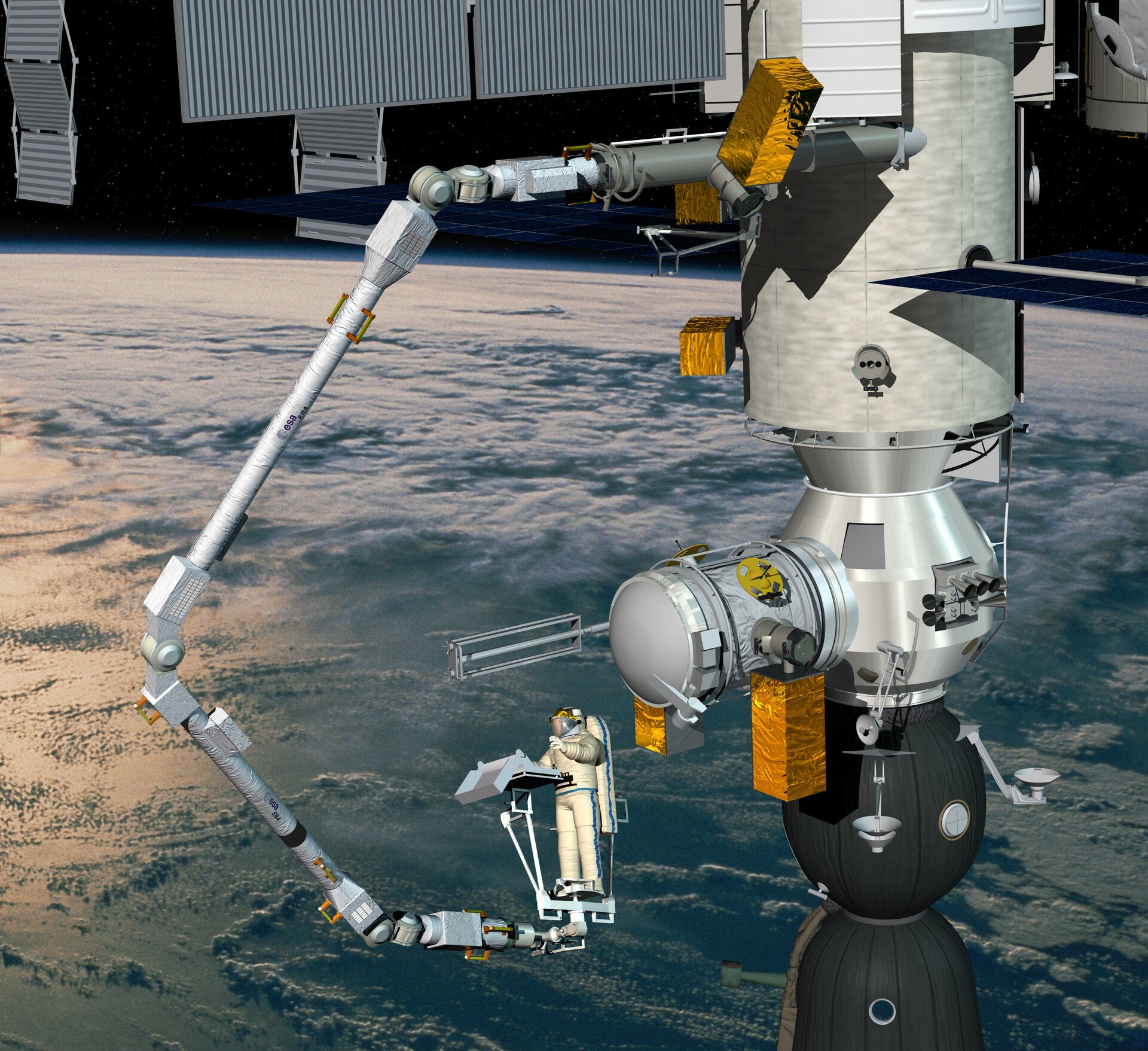Yesterday, two Russian cosmonauts spent six hours and 37 minutes in low Earth orbit installing a giant robotic arm on the International Space Station that’s designed to work autonomously, move its way across the outside of the station, and pick up and transport astronauts during spacewalks.
Cosmonauts Oleg Artemyev and Denis Matveev of Roscosmos journeyed out of the ISS at 11:01 a.m. ET on Monday and wrapped up their spacewalk at 5:37 p.m., according to NASA. While hanging off the space station, the pair installed and connected a control panel for the European robotic arm, which will be used to serve the Russian side of the ISS. The duo also removed the arm’s protective covers and installed handrails on the Nauka module, a multipurpose Russian lab.
A European consortium led by Airbus Defence and Space in the Netherlands designed and developed the robotic arm for the European Space Agency. The 11.28 m-long arm, which launched to space in July 2021, acts much like a human arm, with wrists, elbows, and shoulders. But unlike a human arm, this robotic arm has two hands and is the first robot to be able to anchor itself to the space station and walk back and forth by moving one hand over the other.

Essentially, it’ll be as though the space station sprouted a giant arm, one capable of handling payloads as they arrive and transferring them directly from outside the ISS to the inside without the need for space-walking astronauts. In fact, the robotic arm could eventually be used to transport space-walkers themselves. Astronauts currently use safety tethers to attach themselves to and move across the ISS while performing spacewalks, but the giant arm is designed to pick them up ever so gently in their weightless state and transport them to different spots on the space station exterior.
But the robot arm is not quite ready to perform yet. Cosmonauts Artemyev and Matveev are scheduled for another spacewalk on April 28 to finish installing the arm. They will jettison thermal blankets that protected the arm during its journey to space, release its launch restraints, flex the joints, and monitor its ability to use two grapple fixtures. Further spacewalks will be needed to complete the outfitting of the “manipulator system,” as NASA describes the arm.
The European robotic arm is being outfitted on the Russian module amidst rising tensions over the orbiting space lab; Russia has threatened to end its cooperation with western countries on the ISS. Dmitry Rogozin, the head of Roscosmos, has taken to Twitter to express his discontent with sanctions imposed by the U.S., Canada, and the European Union following Russia’s invasion of Ukraine in late February.
The U.S. and Russia have had a longstanding partnership with the ISS that’s lasted for more than three decades, although both sides have occasionally squared off. NASA is progressively relying on private companies like SpaceX to launch its astronauts to the ISS, rather than booking seats on Russian Soyuz spacecraft.
